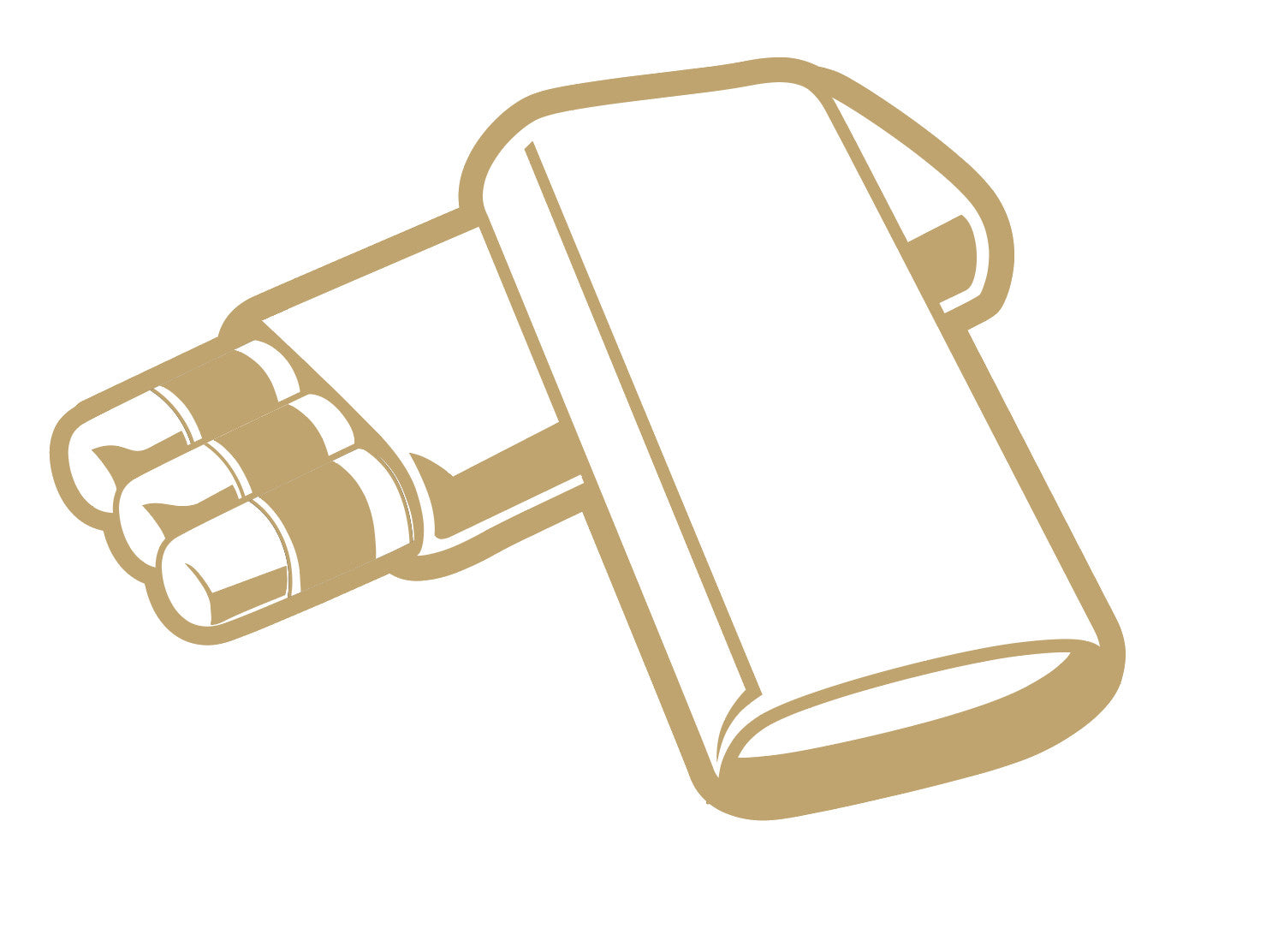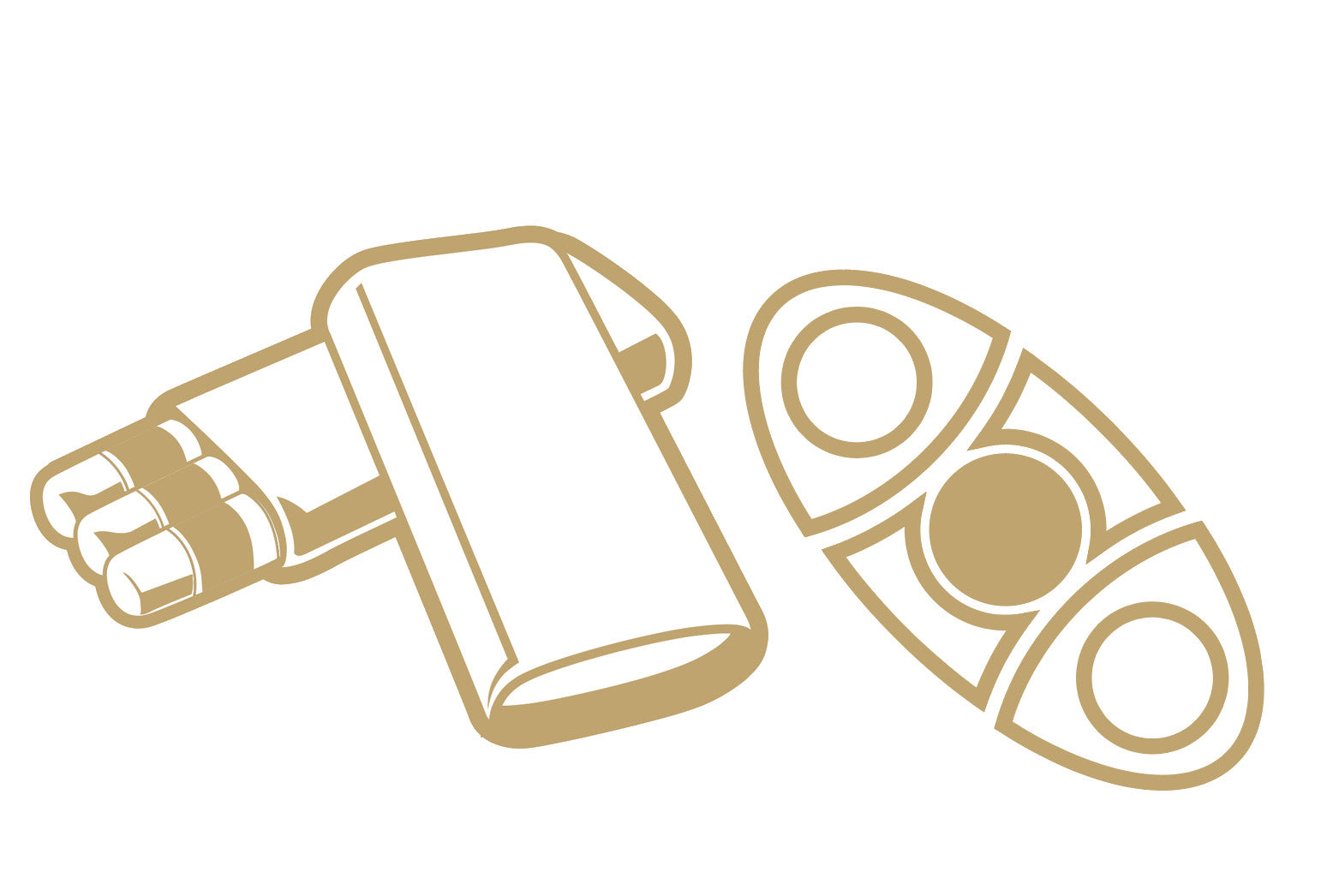Tobacco Beetle
It eats like a pig, breeds like a bunny, lives fast and dies young. It worships tobacco and heat. It's cosmopolitan. It's Lasioderma serricorne, better known as the tobacco beetle, and it loves nothing more than to hatch in your humidor and feast on your cigars.
No bigger than a pinhead, the tobacco beetle makes cigar lovers around the world tremble. One generation of its offspring can take a sizable bite out of a manufacturer's tobacco inventory. Or damage a retailer's reputation. Or even invade your humidor at home. But don't panic if, next time you reach for a smoke, you notice a nasty little hole in the wrapper where a beetle tunnelled in or out. While Lasioderma serricorne are a fact of life for manufacturers, retailers and consumers alike, they can be controlled.
"Once you see them, that usually means the damage has been done," says Gayle Ridge-O'Connor, an entomology assistant at the New Haven-based Connecticut Agricultural Experimental Station, which has been studying the behavioral patterns of insects for more than 125 years. "But you can kill them and prevent them from coming back."
We'll get to that. First, some lessons. To paraphrase Sun Tzu, the ancient Chinese general and philosopher of war, you can't defeat an enemy you don't understand.
Biology of the Beetle
Known by entomologists as "cosmopolitan" insects, tobacco beetles are found all over the world, but only in environments where the temperature exceeds 65 degrees Fahrenheit. Adult beetles measure about two to three millimetres long. They have wings and can fly, but live only for an average of two to four weeks. Brownish-red, they have serrated antennae for touching and smelling; these antennae steer them toward the warm habitats where they nest and breed.
Like many other beetles and insects in general, tobacco beetles have a four-stage life cycle--egg, larva, pupa and adult--that lasts about 10 to 12 weeks. The female adult can chew its way through paper or tobacco leaf, and finds in cigars a suitably warm environment to lay its eggs, small white ovals that are too small for the human eye to detect. The eggs, up to 100 per birth cycle, hatch within six to 10 days, giving birth to the larvae. The larvae present the most danger to tobacco.
"The larvae are what eat the tobacco," says Ridge-O'Connor. "They need tobacco or other foods stored in a suitable temperature to grow into the pupa and adult stage."
White, soft and prickly, larvae can be up to four millimeters long. The larval stage is the beetle's longest phase of life, averaging six to 10 weeks. It's followed by a one- to two-week pupal stage, during which a protective cocoon grows around the insect. Finally, more than two months after the eggs have been laid, the tobacco beetle emerges from its cocoon for its brief life as a fully formed adult.
One common myth regarding tobacco beetles is that they live solely off tobacco. Not true. They're equally attracted to other plants and food products stored within their desired temperature range (65 degrees Fahrenheit and warmer). Tobacco beetles infest stored products, both edible and inedible, including spices (such as paprika and coriander), rice, dry pet food, seeds, pharmaceuticals, books, leather, coffee beans, furniture, upholstery, peanuts and yeast.
Menace to the Manufacturer
"You can't let up for one moment with this beetle," warns Benjamin Menendez, chief blender and director of Caribbean and Central American operations for Tabacalera Cigars International, makers of Vega Fina, Quintero and Saint Luis Rey cigars. "If you do, Lasioderma will get your tobacco."
Menendez, whose family founded Montecristo and also owned H. Upmann before the Cuban revolution, has cigar roots going back three generations. He regards the beetle with respect, and as a worthy adversary. From his early days as a child in his family's factory, Menendez remembers the first thing he was taught about keeping beetles away from cigars.
"The factory must be clean," says Menendez. "Not just clean, but spotless. You can't even have scraps of tobacco left in the corner. Or dust." Other manufacturers agree.
"All warehouses and factories must be as clean as possible," says George Gershel, senior vice president of tobacco for Consolidated Cigar. "That's the first and most important order of business with beetles. After cleanliness, we use serious traps, and fumigate at different stages."
Traps allow the manufacturer not only to kill bugs, but also to assess if a beetle problem is present and to estimate the number of beetle eggs that might have been laid. Menendez reports that for every beetle he finds in a trap, he figures that there are 100 eggs somewhere in his factory. Checking beetle traps has become a part of his daily routine. Consolidated also checks traps in its warehouses and factories at least once a day, Gershel says.
According to Alain Van Ryckeghem, technical director of Insects Limited, an insect control company, beetle traps can be placed on the floor or hung above it. The traps are set with a man-made chemical designed to duplicate the natural pheromone that attracts beetles to one another. The traps are also filled with an adhesive, so once the bugs are lured, they can be ensnared by the sticky surface.
"The trapping mechanism and lure work together," explains Van Ryckeghem. "You can catch a lot of insects with a trap, but you can't control the eggs already laid or the larvae feeding within the food source. Fumigants or freezing are most effective for that."
In a cigar warehouse or factory, fumigants intended to destroy pests are applied after the tobacco is aged and, often, just before the cigars are shipped. The most popular fumigant used in the cigar industry is Phostoxin, a chemical made of aluminum phosphide. When sprayed into a sealed and air-tight room, Phostoxin leaves no residue and kills beetles in all stages of life. On average, Phostoxin takes effect and evaporates within 72 hours of spraying. It leaves no harmful toxins or residue and has no effect on the taste of the tobacco or the health of the smoker.
Menendez traps and fumigates, but still relies heavily on freezing. "Chemicals get banned for all kinds of reasons," says Menendez. "Freezing is still the best because it's the most natural way to treat a cigar. People think freezing affects the taste, but look at what it does to meat or food. It preserves the flavor."
Van Ryckeghem also counts freezing as an effective way to kill beetles, but he stresses that each case is different. As a consultant called in to rid storage facilities from pests and insects, Van Ryckeghem inspects the infested environment and then interviews workers before he weighs the most effective solutions. "You have to look at the type of insect first," he says. "With tobacco beetles, often traps and fumigants and freezing are all necessary to best control the environment, whether it's infested or not."
"I've seen beetles make a bale of tobacco into a pile of dust and powder," notes Consolidated's Gershel. "You need to keep a close eye, you can't ever get careless, and you have to make sure the same goes for your supplier."
Beetles in the Smoke Shop
The battle between man and beetle doesn't stop after the rolled cigars leave the manufacturer. With walk-in humidors and storage facilities often set in excess of 70 degrees Fahrenheit and 70 percent relative humidity, tobacconists' humidors can serve as luxury hotels for beetles.
Devlin’s Cigar Divan checks each and every box when it arrives particularly the Cuban stock (Habanos SA’s quality control is not up to it’s Dominican counterparts) to ensure there is no sign of the tobacco beetle.
Good retailers like Devlin’s Cigar Divan will closely monitor all cigars to ensure that if a break out occurs that it is quickly isolated.
Controlling an Outbreak
Once cigars have been brought home, consumers should inspect their humidors every few days, especially if they live in a hot or humid climate, or purchase cigars more than once a week.
If beetles are in a desktop humidor, it's hard not to tell. Look for bugs flying up when the humidor's top is opened, or for a pinhole-sized circle in your cigar. If you see a beetle, don't panic; the cigars are salvageable.
Even though manufacturers and retailers take precautions against beetles, it's not impossible for a few to sneak through into your cigars, or for you to pick up a few beetles that fly over from the kitchen cupboard or pet food container. In a recent poll taken on this site, 28 percent of respondents reported they had experienced a beetle infestation. Fortunately, 72 percent of those who had suffered an infestation were able to salvage their cigars. While horror stories of massive infestations in desktop humidors exist, most beetle problems in the home are moderate and manageable.
If you see signs of damage, take immediate action. Put all the cigars from an infected humidor in a zipped plastic bag and place them in your freezer for three days. If the cigars are still in their box, put the whole box into the freezer. Treat all of your cigars, because if you have one damaged cigar, you have to assume they're all at risk. Freezing infested cigars kills any beetles or eggs inside, preventing your beetle problem from spreading. Some experts even suggest freezing your cigars twice, to be doubly sure. "Freezing twice will ensure the beetles and their eggs have been killed," says Ridge-O'Connor. "It's the only foolproof way to get rid of them if you find them in your home."
After three days in the deep freeze, move the cigars into your refrigerator to avoid shocking the smokes from the temperature change, which could split their wrappers. In the meantime, wipe your empty humidor clean with a damp cloth. Don't use any type of cleaner or disinfectant--it will ruin the wood and leave an odour that will taint your cigars. After one day in the refrigerator, the cigars can be returned to the humidor. Include some strips of cedar to absorb the excess moisture being released.
Now it's time to address the problem that caused the beetles to hatch. Your humidor was probably too moist or too hot. Use a digital hygrometer/thermometer to get an accurate reading, and consider whether the room that houses your humidor isn't subject to temperature extremes when you're not around. Make sure the box is not in direct sunlight, and check your humidification system. If you're using a homemade system, or have a cheap, ineffective product, invest in a high-quality device. Your cigars are worth it. At least, the beetles think so.



























































